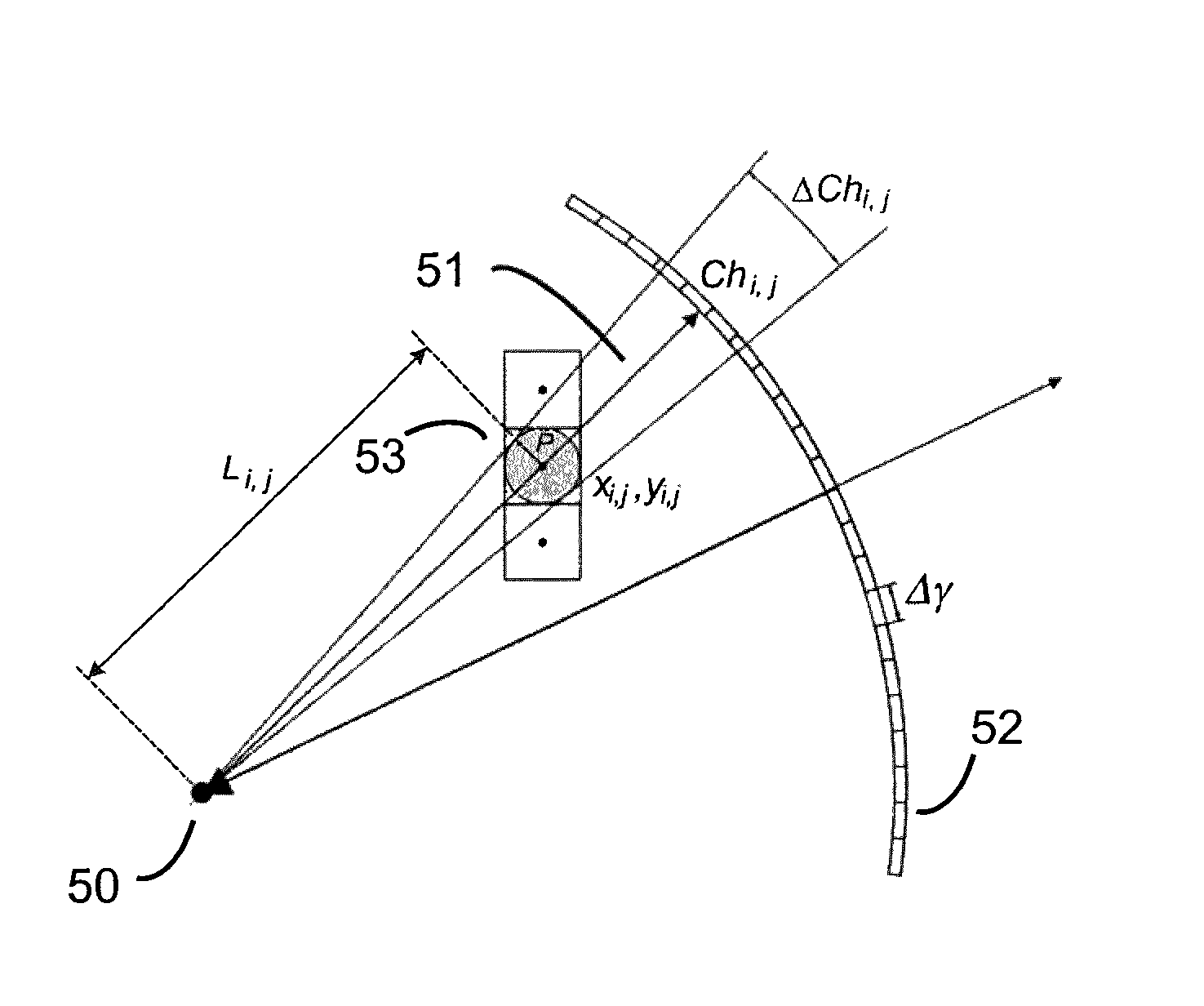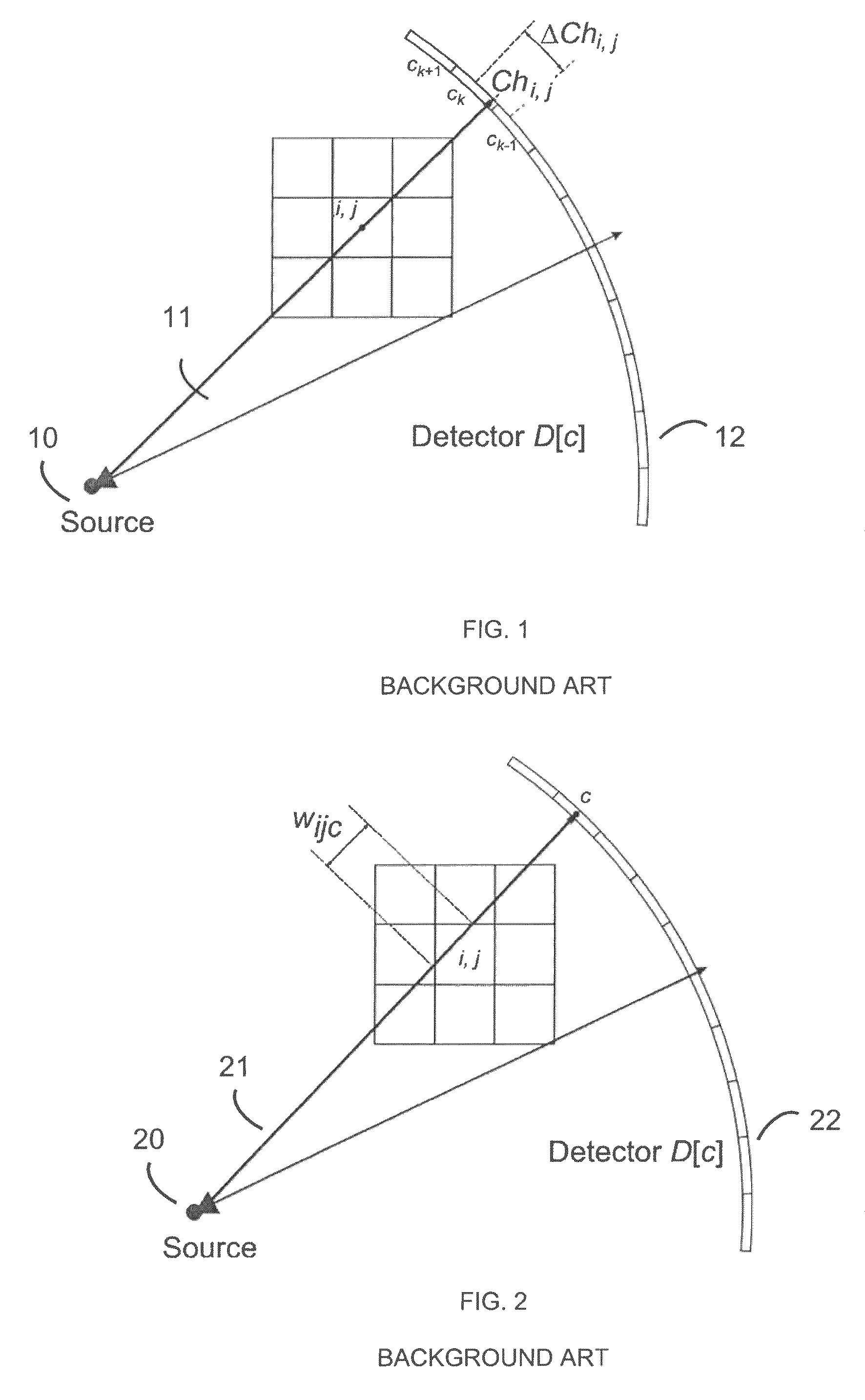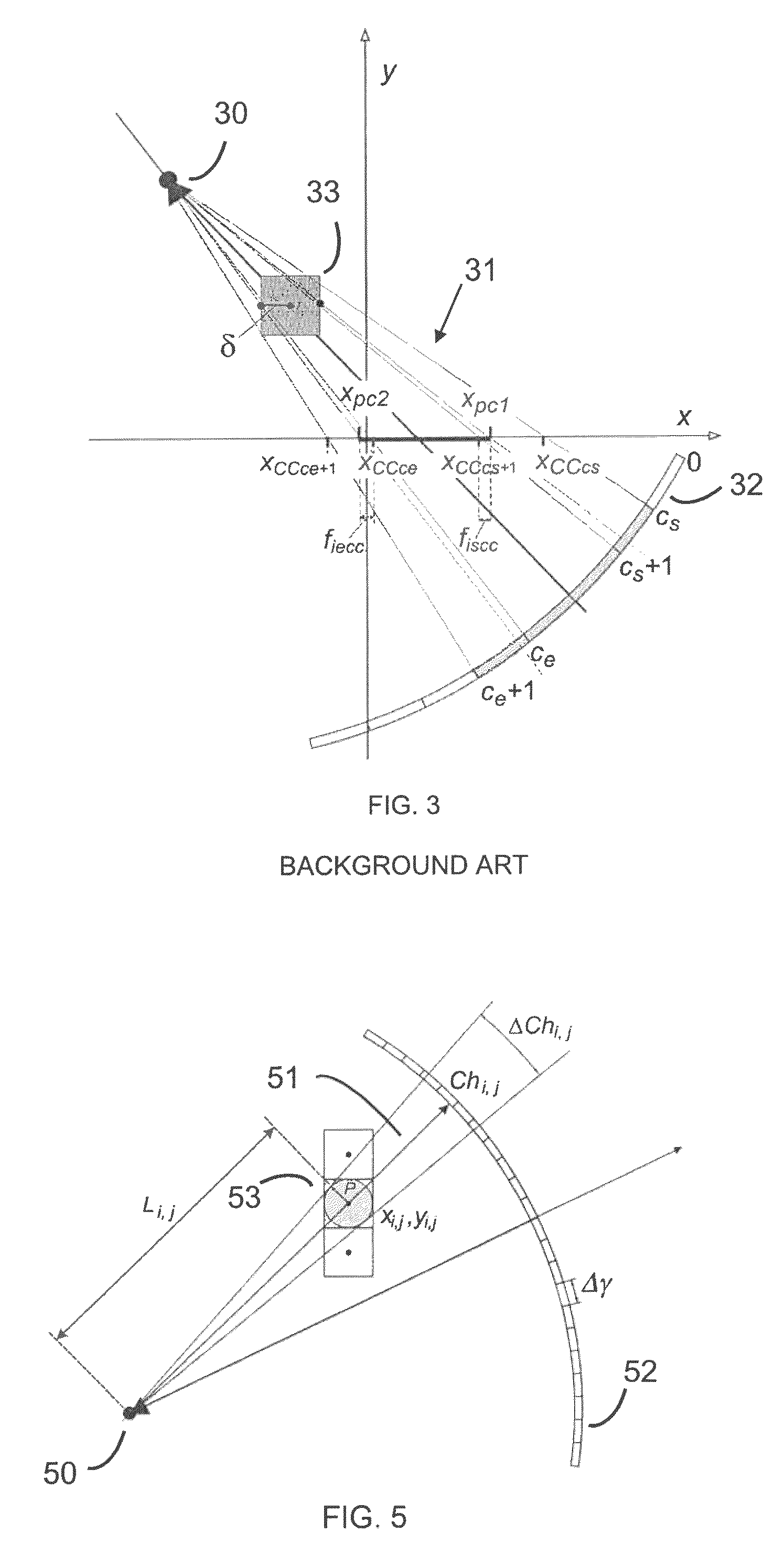Computed tomography device and method using circular-pixel position-adaptive interpolation
a computed tomography and position-adaptive interpolation technology, applied in tomography, instruments, nuclear engineering, etc., can solve the problems of loss of lateral resolution, inability to actually project the pixel onto the detector array, and inability to realize the effect of a pixel position projection
- Summary
- Abstract
- Description
- Claims
- Application Information
AI Technical Summary
Benefits of technology
Problems solved by technology
Method used
Image
Examples
first embodiment
[0039]In the first embodiment, the method is implemented in the channel direction. In an alternate embodiment, the method can be implemented in the segment direction by assuming the voxel is circular in z and calculating the projection of the circle across the segments in the z direction, as shown in FIG. 10. Q is the pixel radius in z and is equal to the reconstruction slice spacing (though in other embodiments it can be calculated differently). FIGS. 10A-E show results for FOVs of 500, 400, 320, 240 and 180, respectively. The solid lines represent the present invention and the dashed lines show, for comparison, distance driven backprojection.
[0040]The floating point segment position is determined exactly the same as it is for the pixel-driven method:
[0041]zseg=D·zpL(16)
where zseg is the distance from the then center of the detector to the backprojection segment location, D is the source to detector distance and is zp is the z distance of the reconstruction pixel from the source-de...
third embodiment
[0046]In a third embodiment, the method can be implemented for both the channel and segment directions at the same time. This is the 3-D case, where the circular pixel is now a spherical voxel with radius S. Equations (6-15) are used to calculate channel direction projection with P=S and equations (16-22) for segment direction, with Q=S. This embodiment can be used for full cone-beam detectors.
[0047]The invention may also be embodied in the form a computer-readable medium containing a stored program to cause a computer to carry out the various operations and functions described above.
PUM
 Login to View More
Login to View More Abstract
Description
Claims
Application Information
 Login to View More
Login to View More - R&D
- Intellectual Property
- Life Sciences
- Materials
- Tech Scout
- Unparalleled Data Quality
- Higher Quality Content
- 60% Fewer Hallucinations
Browse by: Latest US Patents, China's latest patents, Technical Efficacy Thesaurus, Application Domain, Technology Topic, Popular Technical Reports.
© 2025 PatSnap. All rights reserved.Legal|Privacy policy|Modern Slavery Act Transparency Statement|Sitemap|About US| Contact US: help@patsnap.com



